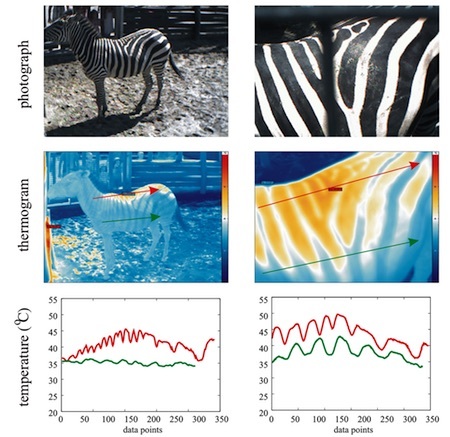Marc Abrahams's Blog, page 181
June 25, 2018
Neuromarketing for dogs
Developing successful products aimed at dogs might not always be as straightforward as it may seem :
“Because dogs cannot speak, traditional behavioral methods may be inadequate to reveal what dogs like or dislike.”
 But, according to the website of Dog Star Technologies LLC, newly developed methods involving fMRI scanning (combined with machine-learning algorithms) might be able to provide neuromarketing insights for dogs’ true preferences.
But, according to the website of Dog Star Technologies LLC, newly developed methods involving fMRI scanning (combined with machine-learning algorithms) might be able to provide neuromarketing insights for dogs’ true preferences.
Co-founder of the firm, Gregory Berns, MD, PhD [pictured] (Distinguished Professor of Neuroeconomics at Emory University, US), is an expert on training dogs to feel comfortable inside the claustrophobic and noisy superconducting coils of an MRI scanner. In such a way, wide-awake dogs can be evaluated to determine what they really like and dislike – Dog Star say :
“[…] groundbreaking technology for obtaining quality fMRI imaging of awake unrestrained dogs provides a great resource for developing and validating novel canine products that Dogstar creates in-house.”
“Our basic research has made possible applied applications in the realm of product development. Because dogs cannot speak, traditional behavioral methods may be inadequate to reveal what dogs like or dislike. Such methods will not reveal internal motivations or emotions. Neuroimaging has proven value in human product development, and Dog Star Technologies is at the cutting edge of applications for canine product development. Possible applications include optimization of nutrition, toy design, and cognitive enhancers.”
With the aid of their newly developed technology Dog Star are also developing aromatherapy products for dogs and a canine ‘relaxation vest’.
Also don’t miss : professor Berns’ new book ‘What It’s Like to Be a Dog’

June 24, 2018
Who Might You Meet at the Ig? London’s Pioneering Theatrical Electrician
If you come to the Ig Nobel Prize ceremony, you might enjoy chatting with your neighbors, in the audience. Many have done amazing things. In this video, Ann Crighton-Harris tells how she became the first woman to be a professional electrician in London’s theaters.
Perhaps you sat near Ann Crighton-Harris in the audience at the 2011 Ig Nobel Prize ceremony. That year her husband, John Senders, was up on stage, being awarded an Ig Nobel Prize for Public Safety, for conducting a series of safety experiments in which a person drives an automobile on a major highway while a visor repeatedly flaps down over his face, blinding him. Here’s video of John Senders doing that driving research:
Who’s next?
Who might you meet at this year’s Ig Nobel Prize Ceremony? Come and see. TICKETS go on sale Tuesday, July 10, at noon (Boston time), available exclusively from the Harvard Box Office.
Whoever you meet at the Ig also has a rare opportunity. They get to meet you!
(Thanks to Margo Howard for bringing this wonderful Ann Crighton-Harris video to our attention.)

June 23, 2018
Exit, pursuing a bear: Farewell Troy Hurtubise
We have just heard the sad news that Troy Hurtubise died in a car-truck crash near his home town, North Bay, Ontario. We got to know Troy in 1998 when he was awarded an Ig Nobel Prize in the field of safety engineering, for developing, and personally testing a suit of armor that is impervious to grizzly bears. Troy was an almost-Shakespearean character, with an added dash of Don Quixote. Troy’s bear quest, once begun, became lifelong. Now that Troy has exited life’s grand stage, one is almost compelled to say that, temperamentally, he exited, pursuing a bear.
Troy returned to the Ig Nobel ceremony the year after he won his prize, where he led a chorus of opera singers in paying tribute to his bear suit. Click here to see video of that stirring moment.
We stayed in touch, on and off, over the years as Troy pursued not just grizzly bears, but also a stream of sometimes overly-clever ideas involving electronic equipment, chemical substances, heavy construction machinery, spies, and the British Royal Family. We documented many of Troy’s adventures here, on the Improbable Research web site. Recent reports elsewhere tell of his adventures with coffee, hair, particles of dark matter, and life in general:
“Hurtubise new invention all about plant and hair growth (VIDEO)” [Bay Today]
“Troy Hurtubise wants Project Grizzly to roar one more time with better armour and a new movie” [Hamilton Spectator]
“How inventor Troy Hurtubise stays awake and ‘completely coherent’ for 50 straight hours” [National Post]
” ‘Is the bear man supposed to work at Tim Hortons?’ ” [Sudbury Star]
The first seven years or so of Troy’s grizzly bear adventures are still on display in a documentary film called “Project Grizzly“, directed by Peter Lynch and produced by the National Film Board of Canada. Here is that film:
Here are some news reports about Troy’s death:
“Police say ‘bear suit’ inventor Troy Hurtubise died in northern Ont. highway crash” [CTV News]
“Police identify Troy Hurtubise as victim in Highway 17 crash” [CBC]
“Local Inventor Hurtubise Died in Sunday Collision With Tanker” ]My North Bay Now]
Troy was a most unusual person. When he heard a colorful, even fanciful, idea emerge from his mouth, he seemed to feel honor-bound to make that idea come true, no matter what. He was, until this unfortunate highway crash, a willfully mythical creature—often bound in a strange and wondrous suit of titanium, duct tape, hockey pads, and his own imagination—walking, running, and occasionally toppling over, amongst mortals.
We, and the world, will miss him.

June 22, 2018
Distracted drivers of automobiles, then and now…
The problem of distracted drivers—a problem honored years ago by two Ig Nobel prizes—continues to worsen, suggests Jonathan Gitlin, writing in Ars Technica:
Multiple studies show no improvement in distracted driving
Distracted driving is worst in the Northeast, best in the Midwest
Many people have tried to attacked the problem, some for better, some for worse. Two of those efforts have been rewarded with Ig Nobel Prizes.
Driving While a Flap Repeatedly Covers the Driver’s Eyes
The 2011 Ig Nobel Prize for public safety was awarded to John Senders of the University of Toronto, for conducting a series of safety experiments in which a person drives an automobile on a major highway while a visor repeatedly flaps down over his face, blinding him. Details are in this publication and in the video below: “The Attentional Demand of Automobile Driving,” John W. Senders, et al., Highway Research Record, vol. 195, 1967, pp. 15-33.
Driving While Watching Television
The 1993 Ig Nobel Prize for visionary technology was awarded jointly to Jay Schiffman of Farmington Hills, Michigan, crack inventor of AutoVision, an image projection device that makes it possible to drive a car and watch television at the same time, and to the Michigan state legislature, for making it legal to do so. Schiffman documented his work, in US patent #5061996A.

June 21, 2018
Camphor poisoning following ingestion of mothballs ‘for headache’
If you are suffering from a persistent headache, don’t be tempted to eat mothballs. In 2011, a 34-year old patient was admitted (unconscious) to a hospital emergency department in Amsterdam “following the ingestion of camphor mothballs for persisting headaches”.
Fortunately, after a week or so of intensive clinical care she recovered and was discharged in good clinical condition (apart from some apparent memory loss). See: Kamferintoxicatie na inname van mottenballen ‘wegens hoofdpijn’ (in Dutch) in: Nederlands Tijdschrift Voor Geneeskunde [01 Jan 2011, 155(39):A3676]. An extended extract of the study (in English).
Note: Mothballs, which can contain camphor, naphthalene, 1,4-dichlorobenzene and other highly toxic chemicals should never be ingested for any reason.

June 20, 2018
Article 15—“Débrouillez-vous”
 A jaunty passage from Ed Yong’s essay “The Next Plague Is Coming. Is America Ready?” in The Atlantic magazine:
A jaunty passage from Ed Yong’s essay “The Next Plague Is Coming. Is America Ready?” in The Atlantic magazine:
If [the disease outbreak does return], is there any protective equipment at the hospital? “No,” she tells me.
Mikolo laughs. “Article 15,” he says.
Article 15 is something of a Congolese catchphrase, referring to a fictional but universally recognized 15th article of the country’s constitution, “Débrouillez-vous”—“figure it out yourself.” I hear it everywhere. It is simultaneously a testament to the Congolese love for droll humor, a weary acknowledgment of hardship, a screw-you to the establishment, and a motivational mantra. No one’s going to fix your problems. You must make do with what you’ve got.
The sub-headline on that essay says:”The epidemics of the early 21st century revealed a world unprepared, even as the risks continue to multiply. Much worse is coming.”
BONUS (related): Catch-22
The numbers 15 and 22 will be among those explored in the special NUMBERS issue (vol. 24, no. 4) of the Annals of Improbable Research, coming later this year.

June 19, 2018
Experimental Evidence That Stripes Do Not Cool Zebras, by Ig Nobel Winners
The prize-winning researchers who discovered why white-haired horses are the most horsefly-proof horses has now probed a classic mystery about zebra stripes. They published this report: “Experimental Evidence That Stripes Do Not Cool Zebras,” Gábor Horváth, Ádám Pereszlényi, Dénes Száz, András Barta, Imre M. Jánosi, Balázs Gerics, and Susanne Åkesson, Scentific Reports, vol. 8, no. 9351, 2018. The authors explain what they did, and what they reasoned from it:
“There are as many as 18 theories for the possible functions of the stripes of zebras, one of which is to cool the animal. We performed field experiments and thermographic measurements to investigate whether thermoregulation might work for zebra-striped bodies.
“A zebra body was modeled by water-filled metal barrels covered with horse, cattle and zebra hides and with various black, white, grey and striped patterns. The barrels were installed in the open air for four months while their core temperature was measured continuously. Using thermography, the temperature distributions of the barrel surfaces were compared to those of living zebras. The sunlit zebra-striped barrels reproduced well the surface temperature characteristics of sunlit zebras. We found that there were no significant core temperature differences between the striped and grey barrels, even on many hot days, independent of the air temperature and wind speed. The average core temperature of the barrels increased as follows: white cattle, grey cattle, real zebra, artificial zebra, grey horse, black cattle. Consequently, we demonstrate that zebra-striped coats do not keep the body cooler than grey coats challenging the hypothesis of a thermoregulatory role of zebra stripes.”
The 2016 Ig Nobel Prize for physics was awarded to Gábor Horváth, Miklós Blahó, György Kriska, Ramón Hegedüs, Balázs Gerics, Róbert Farkas, Susanne Åkesson, Péter Malik, and Hansruedi Wildermuth, for discovering why white-haired horses are the most horsefly-proof horses, and for discovering why dragonflies are fatally attracted to black tombstones.
REFERENCE: “An Unexpected Advantage of Whiteness in Horses: The Most Horsefly-Proof Horse Has a Depolarizing White Coat,” Gábor Horváth, Miklós Blahó, György Kriska, Ramón Hegedüs, Balázs Gerics, Róbert Farkas and Susanne Åkesson, Proceedings of the Royal Society B, vol. 277 no. 1688, pp. June 2010, pp. 1643-1650.
REFERENCE: “Ecological Traps for Dragonflies in a Cemetery: The Attraction of Sympetrum species (Odonata: Libellulidae) by Horizontally Polarizing Black Grave-Stones,” Gábor Horváth, Péter Malik, György Kriska, Hansruedi Wildermuth, Freshwater Biology, vol. 52, vol. 9, September 2007, pp. 1700–9.
BONUS: RICHÁRD HEGYESHALMI gives the news study a quick study, writing in the Hungarian journal Index: “What Are the Zebra’s Stripes Good For?“

On the etiquette of eating placentas
The author of the Murrmurrs blog discusses placenta-eating:
The very day I first heard about placenta-eating, I mentioned it to a man and woman who joined us for beer-thirty, and scored a hit right away. It was the man who had eaten the placenta. It wasn’t his wife’s, either. It was at some sort of hippie community event. Sauteed placenta canapes with toothpicks in them, or something. He explained that he ate the placenta because he was polite. “You don’t get offered someone’s placenta and say ‘yuck,'” he said. “That would be rude.”
(Thanks to Jennifer Oeullette for indirectly bringing this to our attention.)

June 18, 2018
Good appreciation of the best appreciators of bad art
There’s a good new appreciation [in Portuguese], published in Folha de S.Paulo, of our collaborators at the Museum of Bad Art (MOBA). Translated into English, the headline is “Get to know the masterpieces of the Museum of Bad Art — Institution in the Boston area brings together two physical galleries and almost 800 works of dubious taste.”
The appreciation reproduces quite a few of the masterful pieces from the MOBA collection, of which we reproduce, in tiny form, this one:

The inconsistencies of animal-based insults in German and English
If you call an English person ‘a mole’ will it carry the same weight as if you call a German person ‘ein Maulwurf’? The power of insults that are based on the names of animal species can vary quite dramatically across different languages and cultures. Prof. Dr. Dagmar Schmauks who is a supernumerary professor at the Technical University of Berlin (and whose research interests include pragmatics, man-animal-relationship, and orientation in space) writes of such things in the scholarly journal Semiotica 2014; 198: 93 – 120. ‘Curs, crabs, and cranky cows: Ethological and linguistic aspects of animal-based insults’
The professor lists many animal-based insults that can have similar and yet in some cases significantly different weights and meaning(s) in German and English. For example :
● smelly: billy-goat [Ziegenbock], fox [Fuchs], skunk [Stinktier]
● slimy: jellyfish [Qualle], snail [Schnecke], snake [Schlange]
● cruel or ruthless: hyena, vulture [Geier], wolf
● sly: fox [Fuchs], rat [Ratte], snake [Schlange], weasel [Wiesel]
● dishonest: magpie, steal like a magpie [Elster, stehlen wie eine Elster]
● deceitful, deceptive: snake (in the grass) [Schlange]
● evasive: weasel [Wiesel]
● wretched: cur [Köter], worm [Wurm]
● subversive: mole [Maulwurf]
Photo credit: The photograph of Scalopus aquaticus linnacus (a mole) is courtesy of Kenneth Catania, Vanderbilt University, US.
Note: The paper is dedicated to Professor Reinhold Aman, a prominent figure in the field of Maledictology, and editor of the much missed journal Maledicta.
Bonus Assignment [optional] : Speciesism : is the human use of insults based on animal names insulting to animals?

Marc Abrahams's Blog
- Marc Abrahams's profile
- 14 followers






